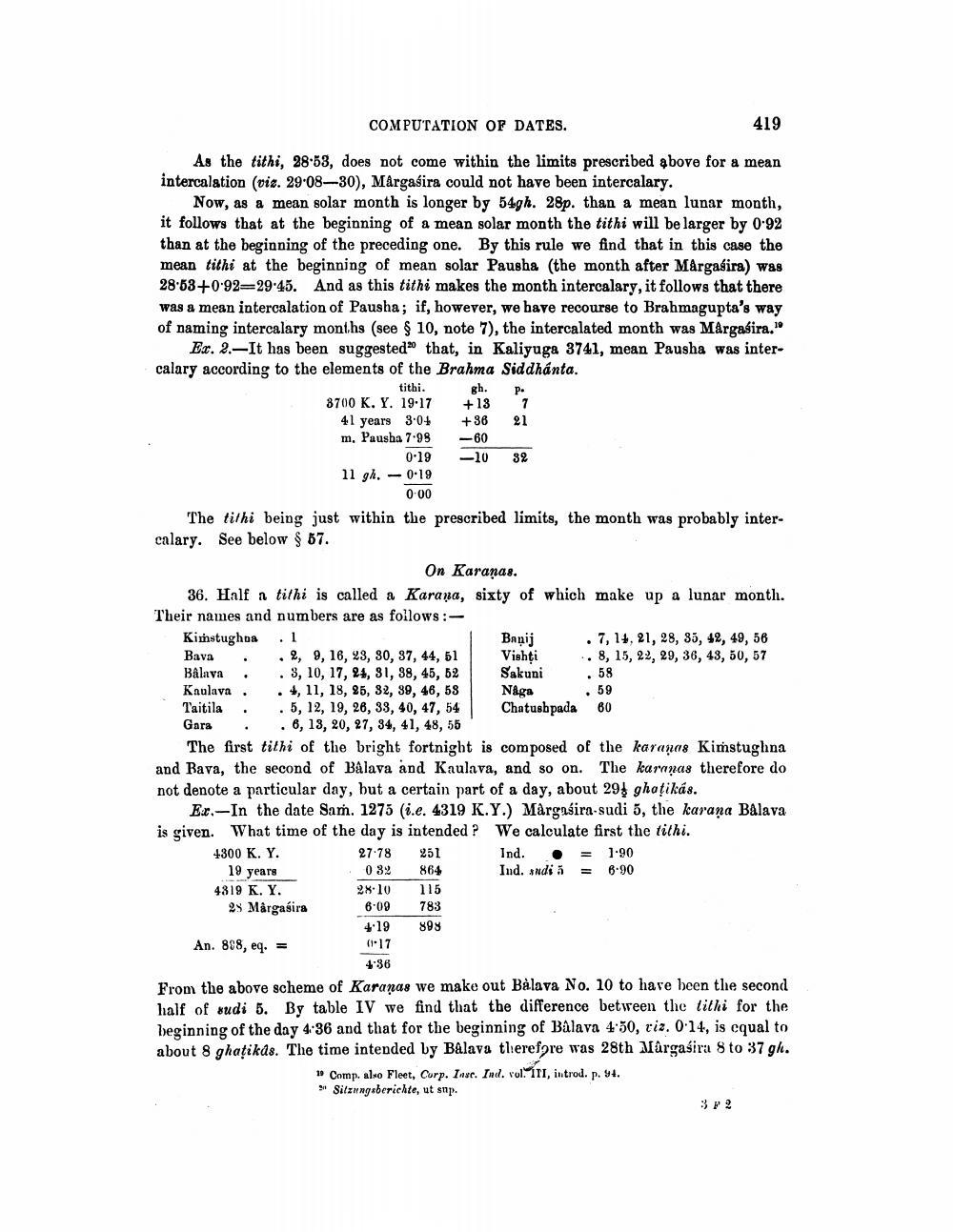________________
COMPUTATION OF DATES.
419
As the tithi, 28-53, does not come within the limits prescribed above for a mean intercalation (viz. 29.08-30), Margasira could not have been intercalary.
Now, as a mean solar month is longer by 54gh. 28p. than a mean lunar month, it follows that at the beginning of a mean solar month the tithi will be larger by 0.92 than at the beginning of the preceding one. By this rule we find that in this case the mean tithi at the beginning of mean solar Pausha (the month after Margasira) was 28:53+0.92=29:45. And as this tithi makes the month intercalary, it follows that there was a mean intercalation of Pausha; if, however, we have recourse to Brahmagupta's way of naming intercalary months (see $ 10, note 7), the intercalated month was Margasira.."
Ex. 2.-It has been suggested that, in Kaliyuga 3741, mean Pausha was intercalary according to the elements of the Brahma Siddhanta.
titbi. gh. p. 3700 K. Y. 19:17 +137 41 years 3.04 +36 21 m. Pausha 7.99 - 60
0:19 -10 32 11 gh. - 0.19
0.00 The tithi being just within the prescribed limits, the month was probably intercalary. See below $ 57.
On Karanas. 36. Half a tithi is called a Karana, sixty of which make up a lunar month. Their names and numbers are as follows:Kimstugha 1
Banij . 7, 14, 21, 28, 35, 42, 49, 56 Bava . , 2, 9, 16, 23, 30, 37, 44, 51
Vishți
.. 8, 15, 22, 29, 36, 43, 50, 57 Balava . . 9, 10, 17, 24, 31, 38, 45, 52 Sakuni . 58 Kaulava. . 4, 11, 18, 85, 82, 89, 46, 58 Naga . 59 Taitila . 5, 12, 19, 26, 33, 40, 47, 54 Chatushpada 60 Gara . . 6, 13, 20, 27, 34, 41, 48, 55
The first tithi of the bright fortnight is composed of the karanas Kimstughna and Bava, the second of Balava and Kaulava, and so on. The karanas therefore do not denote a particular day, but a certain part of a day, about 29$ ghatikás.
Ex.-In the date Sam. 1275 (i.e. 4319 K.Y.) Margasira sudi 5, the karana Balava is given. What time of the day is intended? We calculate first the tithi. 4300 K. Y.
27.78 251 Ind. . = 1.90 19 years
0 32 864 Ind. sudi 5 = 6.90 4319 K. Y.
28.10 115 29 Märgasira 6.09 783
4.19
898 An. 888, eq. =
(1.17
4:36 From the above scheme of Karanas we make out Bàlava No. 10 to have been the second half of sudi 5. By table IV we find that the difference between the tithi for the beginning of the day 4:36 and that for the beginning of Balava 450, viz. 0'14, is equal to about 8 ghaţikds. The time intended by Balava therefore was 28th Margasira 8 to 37 gh.
* Comp. also Fleet, Curp. Insc. Ind. vol. 11, introd. p. 94. 9 Sitzungsberichte, ut sup.
3 P ?




